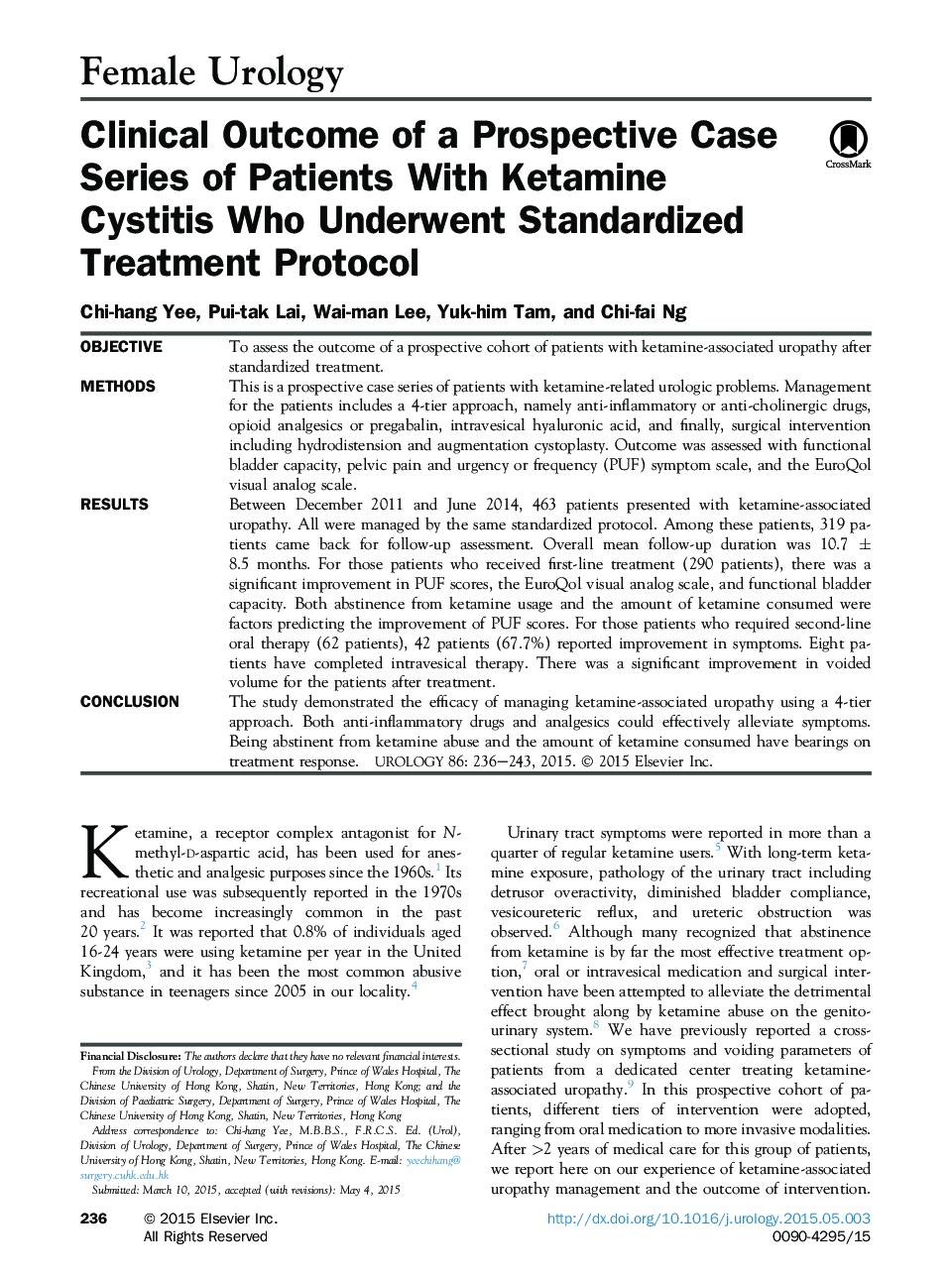| Article ID | Journal | Published Year | Pages | File Type |
|---|---|---|---|---|
| 3898148 | Urology | 2015 | 8 Pages |
ObjectiveTo assess the outcome of a prospective cohort of patients with ketamine-associated uropathy after standardized treatment.MethodsThis is a prospective case series of patients with ketamine-related urologic problems. Management for the patients includes a 4-tier approach, namely anti-inflammatory or anti-cholinergic drugs, opioid analgesics or pregabalin, intravesical hyaluronic acid, and finally, surgical intervention including hydrodistension and augmentation cystoplasty. Outcome was assessed with functional bladder capacity, pelvic pain and urgency or frequency (PUF) symptom scale, and the EuroQol visual analog scale.ResultsBetween December 2011 and June 2014, 463 patients presented with ketamine-associated uropathy. All were managed by the same standardized protocol. Among these patients, 319 patients came back for follow-up assessment. Overall mean follow-up duration was 10.7 ± 8.5 months. For those patients who received first-line treatment (290 patients), there was a significant improvement in PUF scores, the EuroQol visual analog scale, and functional bladder capacity. Both abstinence from ketamine usage and the amount of ketamine consumed were factors predicting the improvement of PUF scores. For those patients who required second-line oral therapy (62 patients), 42 patients (67.7%) reported improvement in symptoms. Eight patients have completed intravesical therapy. There was a significant improvement in voided volume for the patients after treatment.ConclusionThe study demonstrated the efficacy of managing ketamine-associated uropathy using a 4-tier approach. Both anti-inflammatory drugs and analgesics could effectively alleviate symptoms. Being abstinent from ketamine abuse and the amount of ketamine consumed have bearings on treatment response.
